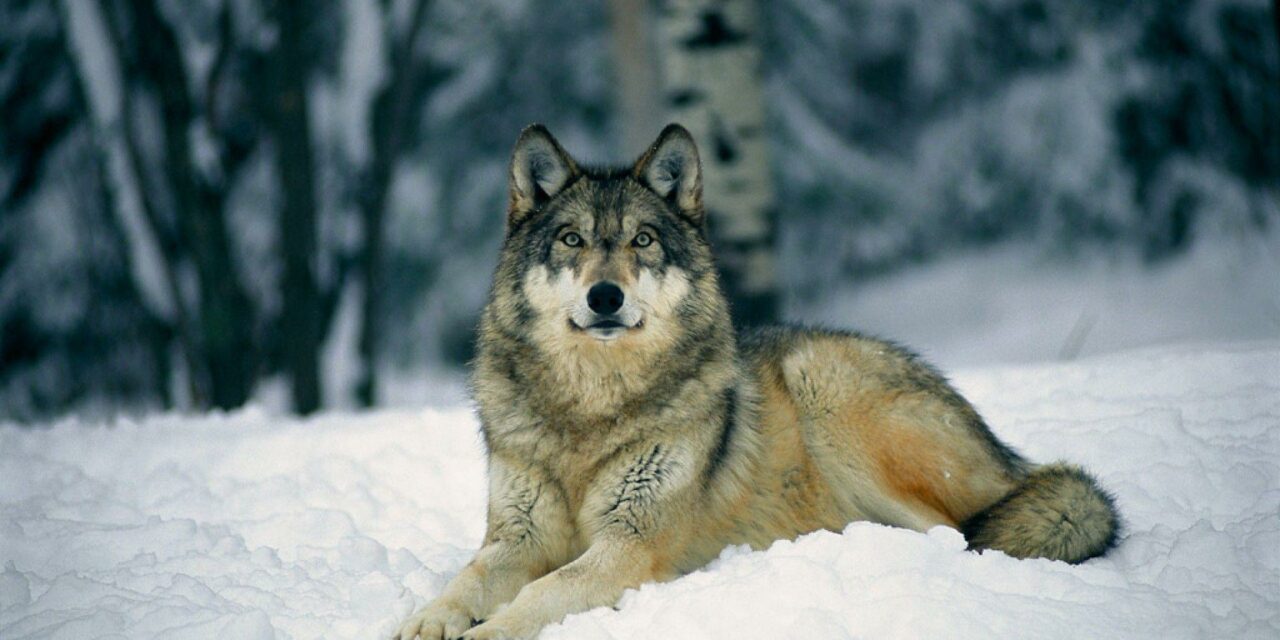There are those among us who think that the gray wolf has gotten a bad rap. Fairytales and folk stories around the world, not just in the U.S., haven’t helped the wolf’s reputation.
From Little Red Riding Hood to the Brothers Grimm, and the Three Little Pigs, folklore portrays the wolf as the “big, bad … ” you get the idea.
Intelligent, and illusive, with a daily range of 30 miles or more, the gray wolf is an apex predator. Until the species was hunted and poisoned out of most of the lower 48 states in the 1940s, wolves played an important role in the ecosystem, especially in the natural control of elk herd populations.
Most (but not all) Colorado ranchers and farmers would disagree with the assessment that reintroducing wolves is necessary to Colorado. Their concerns are economic; impacts to cattle and other livestock herds, and how the presence of wolves might impact their use of crucial summer grazing permits in state and national forests.
CPW’s wolf management plan
In 2020, Colorado voters approved a ballot question giving Colorado Parks and Wildlife (CPW) three years to begin reintroduction of the gray wolf back into Colorado. That timeline is up December 31, 2023.
For much of the past year, these concerns have been debated and addressed by the U.S. Fish and Wildlife Service working in cooperation with local, state, Tribal, and other federal resources. It has finalized the designation of an experimental population of gray wolves (Canis lupus) in Colorado under section 10(j) of the Endangered Species Act. This action provides management flexibility in support of the state of Colorado’s voter-mandated gray wolf reintroduction program, and protections for ranchers and farmers concerned about predatory behavior around livestock.
The final 10(j) rule and final Record of Decision are available today in the Reading Room and on the project webpage. The 10(j) rule becomes effective on December 8, 2023, 30 days after publication in the Federal Register.
Colorado secures source population of gray wolves from Oregon
CPW is coming in just under the wire on that directive. It has announced a one-year agreement between Colorado Parks and Wildlife and the Oregon Department of Fish and Wildlife.
Oregon will source up to 10 wolves for the Colorado gray wolf reintroduction effort. The wolves will be translocated between Dec. 2023 and March 2024. The population is regarded as experimental and it appears that it will be initially focused on areas west of the Continental Divide.
While wolves had disappeared from Colorado, there are still populations in Montana, Wyoming, Oregon, Idaho, and northern Minnesota, and in the past decade, a wolf pack has moved back into northern Wisconsin. In the past few years, a wolf pack from Wyoming, on its own, has been tracked as entering northern Colorado and a wolf was recently identified in northern New Mexico.
Pointers From Colorado Parks and Wildlife:
CPW points out that “in most situations, people and wildlife can coexist.” The key is to respect the wildness of wildlife. “Wildlife” is just that—wild.
Most dangerous and potentially harmful encounters occur because people fail to leave the animals alone. Gray wolves, like all wildlife in Colorado, should not be harassed, captured, domesticated, or fed.
From the CPW:
- Be alert and aware when recreating or living in the Colorado backcountry.
- To prevent problems with wildlife, give distance, keep calm and know your surroundings.
- Keep a clean camp or home site to avoid attracting any wildlife that might scavenge for food or prey upon other animals that are attracted to these feeding opportunities.
- To protect both pets and wildlife, pets should always be carefully monitored by their owners in areas where they may encounter native wildlife, such as national forests, open space areas, parks and undeveloped parcels of land.
- Pets should be monitored and not left outside at dawn, or dusk.
- Unsupervised dogs that stray from their owner’s homes or from their handlers could be at risk of creating conflicts with wildlife.
- Be respectful of wildlife – Keep dogs on a short (six-foot) leash or in visual/auditory range and owners should vocalize frequently, including the use of whistles.
- Be responsible – Dogs should be trained not to chase or approach wildlife and to return on commands.
- Know before you go – Understand what wildlife may be in the area you like to recreate in and use extra caution recreating at dawn and dusk when most wildlife are active.
- Place a bell or a beeping collar on wider-ranging dogs.








Recent Comments